A major impetus for us to travel to Tibet was the lure of travelling on the (then) recently completed extraordinary high railway linking Tibet to the Qinghai Province. Regarded as an engineering miracle, the Qinghai-Tibet Railway - also known as the "Lhasa Express", stretches for 1,956 kilometers from Lhasa to Xining with 960 kilometers built at an altitude over 4,000 meters and 550 kilometers over permafrost terrain. Travelling at such high altitudes, the train is equipped with piped oxygen for individual supply to the passengers - well so we thought.
Lochoe and Mr Yu picked us up early for our trip to Lhasa Railway Station to catch the high train from Lhasa to Golmud (pronounced Gerr-Mood) in Qinghai Province where we would travel on by public bus to the oasis city of Dunhuang in Gansu Province.
Despite our protestations, Lochoe insisted on carrying my baggage and Mr Yu insisted on taking us through the railway entry and directing us to the sitting room. We were however very appreciative as Chinese railways can be a frenetic and confusing experience for novice rail travellers.
We were sorry to be leaving Tibet and we felt very sad to say goodbye to Lochoe and Mr Yu who had been such a great guide and driver combination, and had made our stay in Tibet so fabulous. Even sadder however was to see Lochoe dropping my cabin bag on two occasions and on the final blow smashing my full 1.5 litre bottle of J & B Scotch Whiskey. It was indeed a pathetic sight to see my bag dripping with my whiskey and saturating my cabin gear as we stumbled onto the railway platform.
Once aboard the train,
the whiskey was forgotten (well, almost) and we were greatly excited about our trip across the high desolate plains of the remote Tibet and Qinghai Province. A broad friendly New Zealand accented voice followed us into our cabin compartment. "Hey guys, we are your cabin partners". It was our first meeting with Kate and Conor, a New Zealand and Irish couple living in Australia, who were fantastic company during what turned out to be a pretty stressful trip and have remained firm friends with us since.
Our train trip from Lhasa to Golmud took 13 hours and the daylight scenery was breathtaking. But it is probably the most inhospitable country we have ever seen. The train line followed the endless main Tibet-Qinghai road with convoy after convoy of army trucks trudging their slow and relentless way north. The sheer enormity of the military presence in such a remote province was chilling.
Just out of Lhasa the rail line passed through sleet driven grasslands between marzipan snow-capped plum pudding mountains, with nomads and their yaks and huts dotted along the way between the occasional brutal cement block township. Although the scenery was framed by startlingly beautiful mountains, it was a stark, bleak and uninviting place for any sort of habitation.
The train trip itself was mildly disappointing as there was no indication as to where we were on the trip nor were there any viewing points where we could disembark.
Even though the rail trip is promoted as having stops for viewing, there was no signage inside the train, nor any audio or visual passenger information. Fortunately we had a map of the railway line but it was almost impossible to work out where we were as most of the signage at the railway stations was in Chinese or Tibetan. And although the distant mountains were huge (some in excess of 7,000m), from our perspective they did not appear to be so imposing because the train was already travelling at such a high altitude.
Our first stop was at Nagqu Station, a miserable bland place with seemingly no accompanying township - just what appeared to be some government buildings and some basic block style concrete buildings. We were still in Tibet and would loved to have stepped out to view the "township" but as there was no information the four of us decided to stay put. Fancy being left alone with no baggage at this lonely and somewhat forgettable place.
The train journeyed on past the township of Amdo to the Tibet-Qinghai border and over the Tangula Mountains at a dizzy height of 5,072 meters. At Tangula Station Conor and I began to suffer effects of altitude sickness. My head was spinning and I was finding it difficult to get my breath. Although the train was not pressurised, we had individual "oxygen" facilities available. But it really didn't help a lot as it was only just fast blowing air.
Interestingly, neither Kate nor Alan suffered any symptoms of altitude sickness. You can never guess to whom and when it may affect a person. We crossed the Tangula Bridge, another engineering marvel some 2.6 km in length with 78 individual bridge arches. If it had not been for these amazing structural sights we would have had no idea as to where we were.
Past Tangula, evening was beginning to set in and it began to snow heavily. Only the occasional antelope and donkey could be seen grazing in the distance. Knives of brilliant sunlight sliced through the long dark mountain shadows of a near evening sky. An eerie but hauntingly beautiful landscape. In the distance huge mountain peaks soared majestically above bizarre pale stony outcrops and massive alluvial fans. We could have well been on another planet.
Early in our rail journey we had realised that our agent had mistakenly booked us from Lhasa to Xining and not to our destination of Golmud. Xining was another nine hours west past Golmud and where the train terminated. This was more than a concern as we had no way of communicating with the train guard who in turn could not notify us when we reached Golmud. To make matters worse, the train guard confiscated our rail tickets, replacing them with plastic tokens. This is standard procedure to ensure the guard knows which passengers are to alight at a particular station but of course this was no help to us.
We knew that we were due to arrive in Golmud around midnight but we had absolutely no idea of where we were at any one point after Tangula. From here on it was pitch dark and we began to worry that if we missed Golmud station, we would end up at the next and final stop of Xining. Worse still, we were being picked up by our China Travel Service guide Harry at Golmud Station and we had no phone* and of course no means of being able to contact him. Furthermore, we had booked our forward bus tickets for early the next morning and our accommodation the next evening in Dunhuang.
We often ponder the merits of being so highly organised with our travels. Alan and I always do a lot of research on where we are travelling to and we have everything we can booked and paid for in advance. To say we are mega organised would be an understatement. We are triple O travellers. Such organisation has its merits as we (theoretically) know what we are doing and where we are staying, and also carry a minimum amount of cash with us. This is an advantage in places such as far west China as credit card facilities are often not available. However, if things go wrong and we are delayed for any reason, we are in real trouble with our forward bookings which of course has a devastating cascading effect the more booked we are!
Wandering through the train compartments I was delighted to find three French men and a Chinese interpreter. They were engineers contracted by the rail authority and thankfully they and the interpreter spoke good English. They were very wonderfully friendly but alas, they couldn't help us either as even the Chinese interpreter had no idea where we were and even she could not communicate with the rail guard. We tend to forget that their are so many different Chinese dialects. Perhaps he was Tibetan.
How we were to identify when we got to Golmud was beyond us. The stations had no lighting and we feared that even if we did identify when we arrived at Golmud, the guard would not let us disembark because he was in possession of our Xining stamped tickets. It was a pretty tense journey. We could at least identify Tangula Station from the long bridge and we guessed we were sort of half way to Golmud. And so we began to count the following station stops. It was not very reassuring but our only means of trying to work out when we were coming close to Golmud Station.
Luckily for us we shared the sleeper carriage with our newly found friends Kate and Conor, who kept us well amused - and who generously stayed awake with us until we arrived at Golmud - just in case we all fell asleep. They told us of their four-day stay in Lhasa which to their surprise - and dismay - included a ridiculous tour of the local hospital. Although their stories of having their blood pressure taken and wondering what on earth they were doing in a Lhasa hospital when they were on a guided tour was very amusing for us, it must have been extremely frustrating for them. They had no travel permits for outside the capital and so they spent their entire time in Tibet in Lhasa city.
We were most impressed with Kate and Conor's on board provisions of dozens of water bottles and an army load of bucket sized containers of dried Chinese noodles. Kate and Conor were experienced travellers and we were more than impressed by their ingenuity and improvision skills when Kate cut in half a water bottle to make two glasses for us - the cap end made a stemmed glass for wine and the bottom section could be used as a beer glass.
Despite the tension, our train trip with them was a lot of fun and despite all our concerns we somehow managed to identify Golmud station, disembarking in the darkest night hours. I still can see Kate's worried face pressed to the train window watching us on Golmud station as we held our breath and hoped like crazy that our guide Harry would actually be there to meet us with our Gansu travel permits for our forward journey to Dunhuang, Gansu (Gansu Province is a strictly closed zone and will not allow travel there without a permit). It was drizzling rain, dark and lonely. To our great relief, Harry emerged from the darkness, equipped with our papers, a car to take us to our hotel and bus tickets for our very early start the next day. We were so relieved to see him.
The consequences of being stranded on a lonely station in the heavily guarded Qinghai Province with no papers or permits did not bear thinking about.
We arrived at our hotel late in the evening, exhausted from our ordeals . We planned to have a light meal or at least a drink but to our dismay the restaurant and bar had just closed. Alan found a bottle of Coca Cola and I raided our coffee supplies before we collapsed into bed.
* It is hard to believe now that we did not carry a mobile phone on that trip. But at that time we had very little if no phone coverage at our home village, and even then it was a CDMA mobile phone that we could not have used internationally. Anyway, it did not help us taking one on our next trip (refer Travelpod "Painted Faces of the Silk Road") as thanks to our incompetent telephone company we did not have Global Roaming and so the phone we took was useless.
Aboard the Lhasa Express - Lhasa to Golmud
Friday, October 19, 2007
 Golmud, Qinghai, China
Golmud, Qinghai, China
Other Entries
-
1From Crowdy Head to Sydney - Our Journey Begins
Oct 0613 days prior Crowdy Head, Australiaphoto_camera0videocam 0comment 0
Crowdy Head, Australiaphoto_camera0videocam 0comment 0 -
2On the Eve - Our Journey to the Distant Chinas
Oct 0712 days prior Sydney, Australiaphoto_camera2videocam 0comment 0
Sydney, Australiaphoto_camera2videocam 0comment 0 -
3A Brief Return to Our Favourite City of Shanghai
Oct 0811 days prior Shanghai, Chinaphoto_camera5videocam 0comment 0
Shanghai, Chinaphoto_camera5videocam 0comment 0 -
4Our Journey to Zhongdian, via Kunming
Oct 0910 days prior Kunming, Chinaphoto_camera2videocam 0comment 0
Kunming, Chinaphoto_camera2videocam 0comment 0 -
5Two Delightful Days in Shangri-la - "Paradise"
Oct 109 days prior Zhongdian, Chinaphoto_camera8videocam 0comment 0
Zhongdian, Chinaphoto_camera8videocam 0comment 0 -
6Mystical Lhasa
Oct 118 days prior Lhasa, Chinaphoto_camera8videocam 0comment 0
Lhasa, Chinaphoto_camera8videocam 0comment 0 -
7Friendly and Not so "Ho-Hum" Tsedang
Oct 136 days prior Tsedang, Chinaphoto_camera16videocam 0comment 0
Tsedang, Chinaphoto_camera16videocam 0comment 0 -
8Rural Tibet - Our Desert Journey to Gyantse
Oct 154 days prior Gyantse, Chinaphoto_camera19videocam 0comment 0
Gyantse, Chinaphoto_camera19videocam 0comment 0 -
9More of Rural Tibet - Our Trip to Shigatse
Oct 163 days prior Shigatse, Chinaphoto_camera4videocam 0comment 0
Shigatse, Chinaphoto_camera4videocam 0comment 0 -
10Returning to Lhasa
Oct 181 day prior Lhasa, Chinaphoto_camera4videocam 0comment 0
Lhasa, Chinaphoto_camera4videocam 0comment 0 -
11Aboard the Lhasa Express - Lhasa to Golmud
Oct 19 Golmud, Chinaphoto_camera18videocam 0comment 0
Golmud, Chinaphoto_camera18videocam 0comment 0 -
12Salt Pans, Altun Shan and a Taklamakan Apparition
Oct 201 day later Dunhuang, Chinaphoto_camera6videocam 0comment 0
Dunhuang, Chinaphoto_camera6videocam 0comment 0 -
13Lovely Dunhuang - An Oasis in the Gobi Desert
Oct 223 days later Dunhuang, Chinaphoto_camera16videocam 0comment 0
Dunhuang, Chinaphoto_camera16videocam 0comment 0 -
14Frenetic Liuyuan and our Rail Trip to Turpan
Oct 234 days later Turpan, Chinaphoto_camera0videocam 0comment 0
Turpan, Chinaphoto_camera0videocam 0comment 0 -
15Toward Turpan - Our Welcome to Xinjiang Province!
Oct 245 days later Turpan, Chinaphoto_camera2videocam 0comment 0
Turpan, Chinaphoto_camera2videocam 0comment 0 -
16Tales of Turpan - Second Lowest Basin in the World
Oct 245 days later Turpan, Chinaphoto_camera11videocam 0comment 0
Turpan, Chinaphoto_camera11videocam 0comment 0 -
17Exotic Urumqi - As Far From the Sea as You Can Be
Oct 267 days later Ürümqi, Chinaphoto_camera7videocam 0comment 0
Ürümqi, Chinaphoto_camera7videocam 0comment 0 -
18Twenty Three Hours to Kashgar by Rail
Oct 289 days later Kashgar, Chinaphoto_camera0videocam 0comment 0
Kashgar, Chinaphoto_camera0videocam 0comment 0 -
19Our Introduction to the Frontier City of Kashgar
Oct 2910 days later Kashgar, Chinaphoto_camera4videocam 0comment 0
Kashgar, Chinaphoto_camera4videocam 0comment 0 -
20A Driver Called Mukhtar - Travels to Tashkorgan
Oct 3011 days later Tashkorgan, Chinaphoto_camera14videocam 0comment 0
Tashkorgan, Chinaphoto_camera14videocam 0comment 0 -
21Kashgar Old City, More Carpets and Abdul Karim
Oct 3112 days later Kashgar, Chinaphoto_camera7videocam 0comment 0
Kashgar, Chinaphoto_camera7videocam 0comment 0 -
22On the Home Run - From Kashgar Back to Urumqi
Nov 0214 days later Ürümqi, Chinaphoto_camera4videocam 0comment 0
Ürümqi, Chinaphoto_camera4videocam 0comment 0 -
23From Urumqi to Shanghai, Sydney and Home
Nov 0416 days later Shanghai, Chinaphoto_camera1videocam 0comment 0
Shanghai, Chinaphoto_camera1videocam 0comment 0 -
24Home In Crowdy Head and A Message to Our Readers
Nov 0517 days later Crowdy Head, Australiaphoto_camera0videocam 0comment 0
Crowdy Head, Australiaphoto_camera0videocam 0comment 0

 Golmud, Qinghai, China
Golmud, Qinghai, China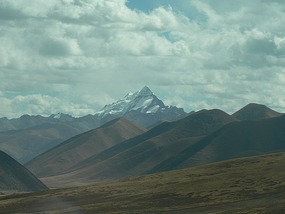
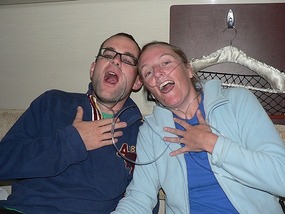
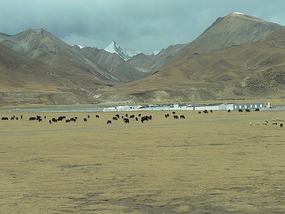
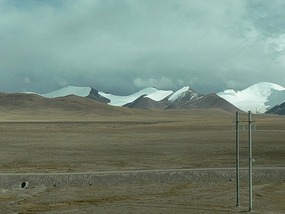
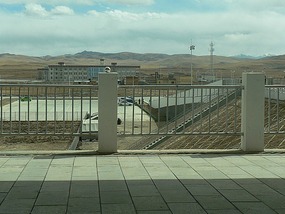
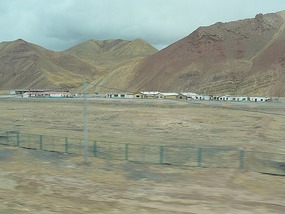
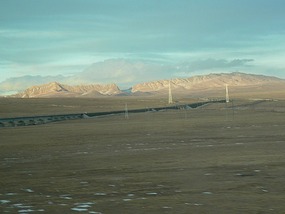
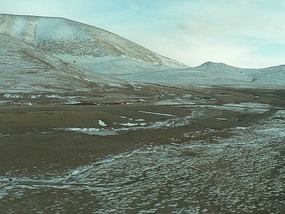
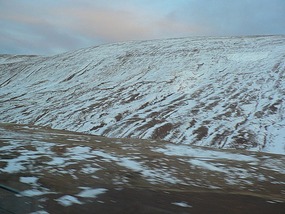
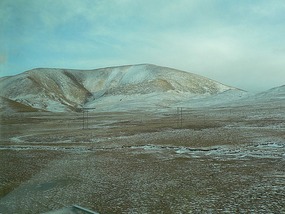


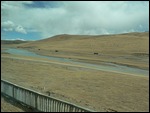
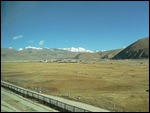

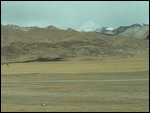
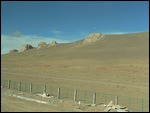
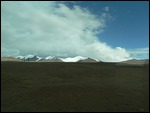
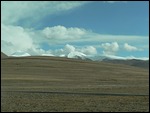
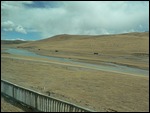
2025-05-23